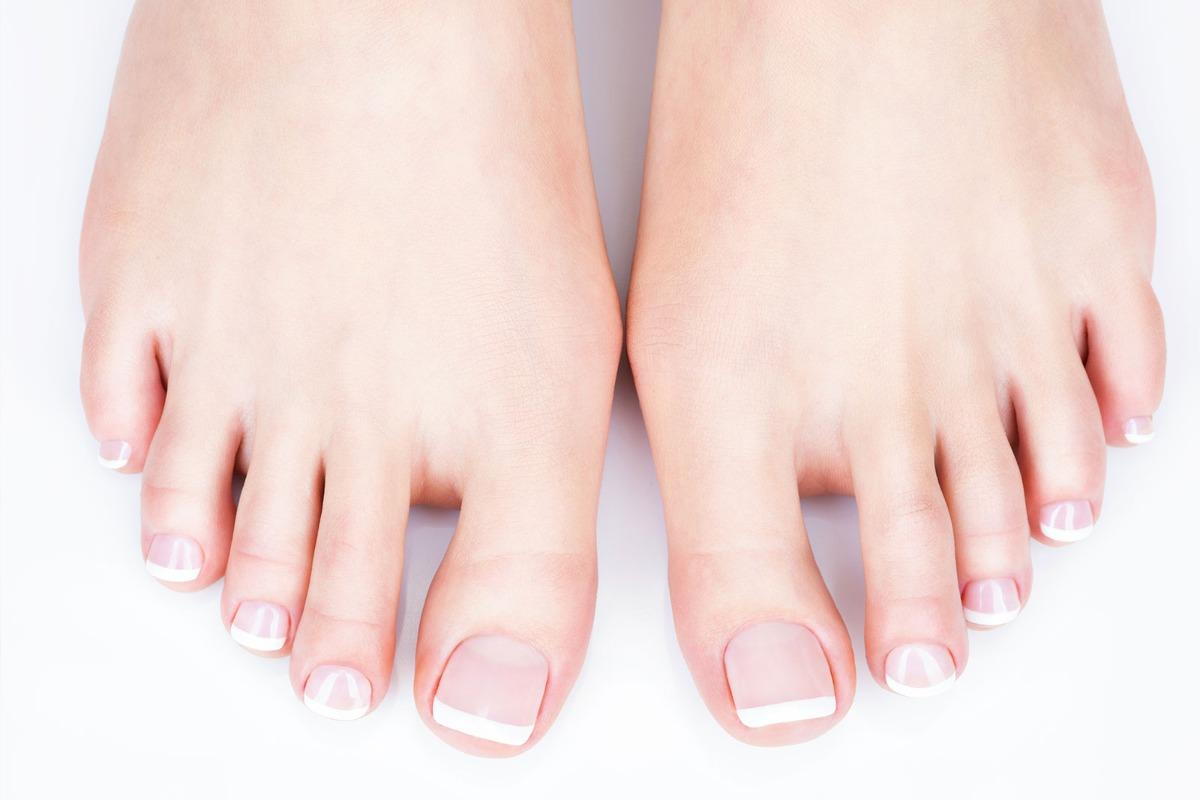Are Your Toes White? What Does It Mean and How To Treat It

- posted: Dec. 21, 2023
Our feet, often overlooked and underappreciated, play a crucial role in our daily lives. While foot issues may not always be at the forefront of our health concerns, the color of our toes can reveal important clues about our well-being. Whitening of toes is a phenomenon that can be indicative of various underlying conditions, ranging from benign to more serious health issues. In this article, we will explore the reasons behind the whitening of toes, the potential health implications, and practical steps to maintain optimal foot health.
Poor Circulation
One common cause of toe whitening is poor circulation. The human circulatory system is responsible for delivering oxygen and nutrients to all parts of the body, including the extremities. When blood flow to the toes is compromised, it can lead to a paleness or whitening of the skin. Poor circulation can be attributed to lifestyle factors such as prolonged sitting or standing, lack of physical activity, or even tight footwear that restricts blood flow.
Raynaud's Phenomenon
Another condition associated with white toes is Raynaud's phenomenon. This disorder affects blood flow to certain areas of the body, typically the fingers and toes, in response to stress or cold temperatures. During an episode, the affected areas may turn white or blue before returning to normal color as blood flow is restored. While Raynaud's phenomenon is generally not a serious health threat, it can be uncomfortable and may indicate an underlying circulatory issue that requires attention.
Recognizing the Signs
Recognizing the signs of whitening toes is essential for maintaining overall foot health. Persistent discoloration, especially when accompanied by other symptoms such as numbness, tingling, or pain, should prompt individuals to seek professional medical advice. Consulting a healthcare provider can help identify the root cause of the issue and guide appropriate treatment.
Importance of Professional Consultation for White Toes
If you notice that your toes are turning an unusual color, don't brush it off. Remember: white toes could signal underlying complex issues like Raynaud’s disease where blood vessels constrict too much in response to cold temperatures causing extremities such as fingers and toes to turn pale or white.
This makes consulting a medical professional crucial since self-diagnosis often misses the mark leading to complications down the line. So, if you spot any changes in the color, you should book an appointment at our clinic for a professional diagnosis.
Conclusion
The whitening of toes can be a visible signal of underlying health issues, emphasizing the importance of foot care and regular self-monitoring. Recognizing the signs, such as persistent discoloration or accompanying symptoms, is crucial in seeking professional guidance.
By paying attention to foot health, individuals can take proactive steps to prevent or alleviate the issue of white toes and ensure the well-being of their feet for years to come. Book an appointment at our clinic for a professional diagnosis.

- posted: Dec. 21, 2023
Our feet, often overlooked and underappreciated, play a crucial role in our daily lives. While foot issues may not always be at the forefront of our health concerns, the color of our toes can reveal important clues about our well-being. Whitening of toes is a phenomenon that can be indicative of various underlying conditions, ranging from benign to more serious health issues. In this article, we will explore the reasons behind the whitening of toes, the potential health implications, and practical steps to maintain optimal foot health.
Poor Circulation
One common cause of toe whitening is poor circulation. The human circulatory system is responsible for delivering oxygen and nutrients to all parts of the body, including the extremities. When blood flow to the toes is compromised, it can lead to a paleness or whitening of the skin. Poor circulation can be attributed to lifestyle factors such as prolonged sitting or standing, lack of physical activity, or even tight footwear that restricts blood flow.
Raynaud's Phenomenon
Another condition associated with white toes is Raynaud's phenomenon. This disorder affects blood flow to certain areas of the body, typically the fingers and toes, in response to stress or cold temperatures. During an episode, the affected areas may turn white or blue before returning to normal color as blood flow is restored. While Raynaud's phenomenon is generally not a serious health threat, it can be uncomfortable and may indicate an underlying circulatory issue that requires attention.
Recognizing the Signs
Recognizing the signs of whitening toes is essential for maintaining overall foot health. Persistent discoloration, especially when accompanied by other symptoms such as numbness, tingling, or pain, should prompt individuals to seek professional medical advice. Consulting a healthcare provider can help identify the root cause of the issue and guide appropriate treatment.
Importance of Professional Consultation for White Toes
If you notice that your toes are turning an unusual color, don't brush it off. Remember: white toes could signal underlying complex issues like Raynaud’s disease where blood vessels constrict too much in response to cold temperatures causing extremities such as fingers and toes to turn pale or white.
This makes consulting a medical professional crucial since self-diagnosis often misses the mark leading to complications down the line. So, if you spot any changes in the color, you should book an appointment at our clinic for a professional diagnosis.
Conclusion
The whitening of toes can be a visible signal of underlying health issues, emphasizing the importance of foot care and regular self-monitoring. Recognizing the signs, such as persistent discoloration or accompanying symptoms, is crucial in seeking professional guidance.
By paying attention to foot health, individuals can take proactive steps to prevent or alleviate the issue of white toes and ensure the well-being of their feet for years to come. Book an appointment at our clinic for a professional diagnosis.
Main Location
5729 Centre Square Dr,
Centreville, VA 20120
Monday
7:30 am - 4:00 pm
Tuesday
7:30 am - 4:00 pm
Wednesday
7:30 am - 4:00 pm
Thursday
7:30 am - 4:00 pm
Friday
7:30 am - 3:00 pm
Saturday
Closed
Sunday
Closed
